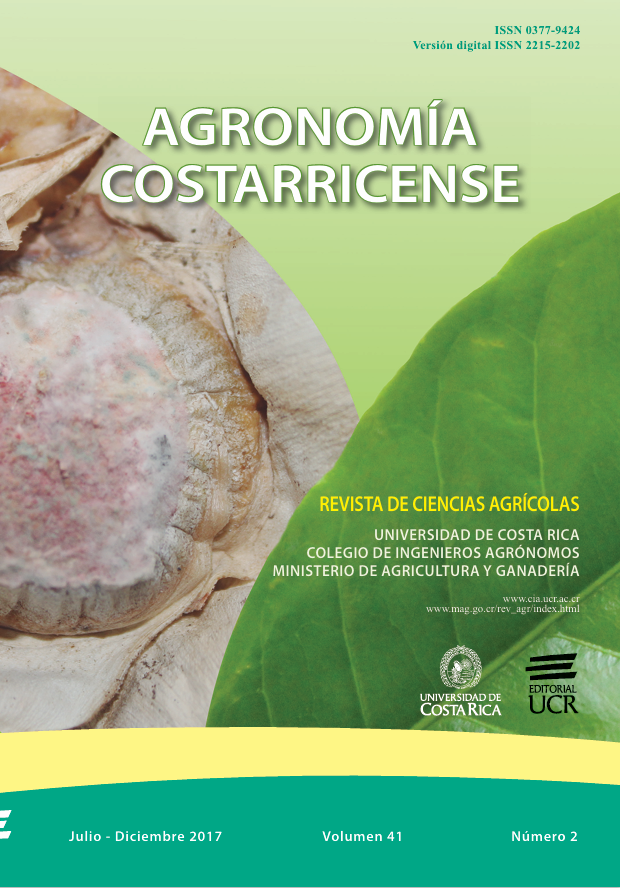Abstract
The aim of this research was to describe the dynamics of calcium concentration in blood serum during peripartum in a Jersey cow herd from Oreamuno, Cartago, Costa Rica and its relationship with productive and reproductive indicators. A total of 161 cows were sampled, their pre-partum diet consisted grazing of kikuyu (Kikuyuocloa clandestina) (15.6% CP, 1.65 Mcal NEL (3X), 0.35% Ca, 0.32% Mg, 3.5% K) supplemented with 4 kg.cow-1.day-1 of a low Ca balanced grain mix (88% DM, 14% CP, 0.2% Ca, 0.42% Mg and 1.38% K), and 1 kg of hay (82.3% DM, 5.1% CP, 0.4% Ca, 0.35% Mg and 1.8% K).day-1. Immediately after calving, cows were supplemented with 1 kg of a balanced grain mix (87.5% DM, 18.6% CP, 0.90% Ca, 0.42% Mg and 1.38% K) per each 2.5 kg of milk. Blood samples were taken from the coccygeal vessels since 7 days before calving until 7 days after calving. Ca concentrations in blood samples were determined by atomic absorption spectrophotometry. The average minimum concentration of Ca during the study was obtained on calving day (7.27 mg.dl-1) and on average the cows exceed the threshold of subclinical hypocalcemia (8.0 mg.dl-1) until day 7 after calving. The blood calcium concentration wasn’t statistically associated to reproductive indicators. Multiparous cows with calcium concentrations lower than 5.5 mg.dl-1 on calving day had statistically (p<0.05) lower: daily milk, actual milk yield and lactation length compared to multiparous cows with blood calcium concentrations higher than or equal to 5.5 mg.dl-1. These findings indicate that blood calcium concentration during peripartum is an associated factor to yield performance in multiparous cows.
Comments

This work is licensed under a Creative Commons Attribution-NonCommercial-NoDerivatives 4.0 International License.
Copyright (c) 2017 Agronomía Costarricense


